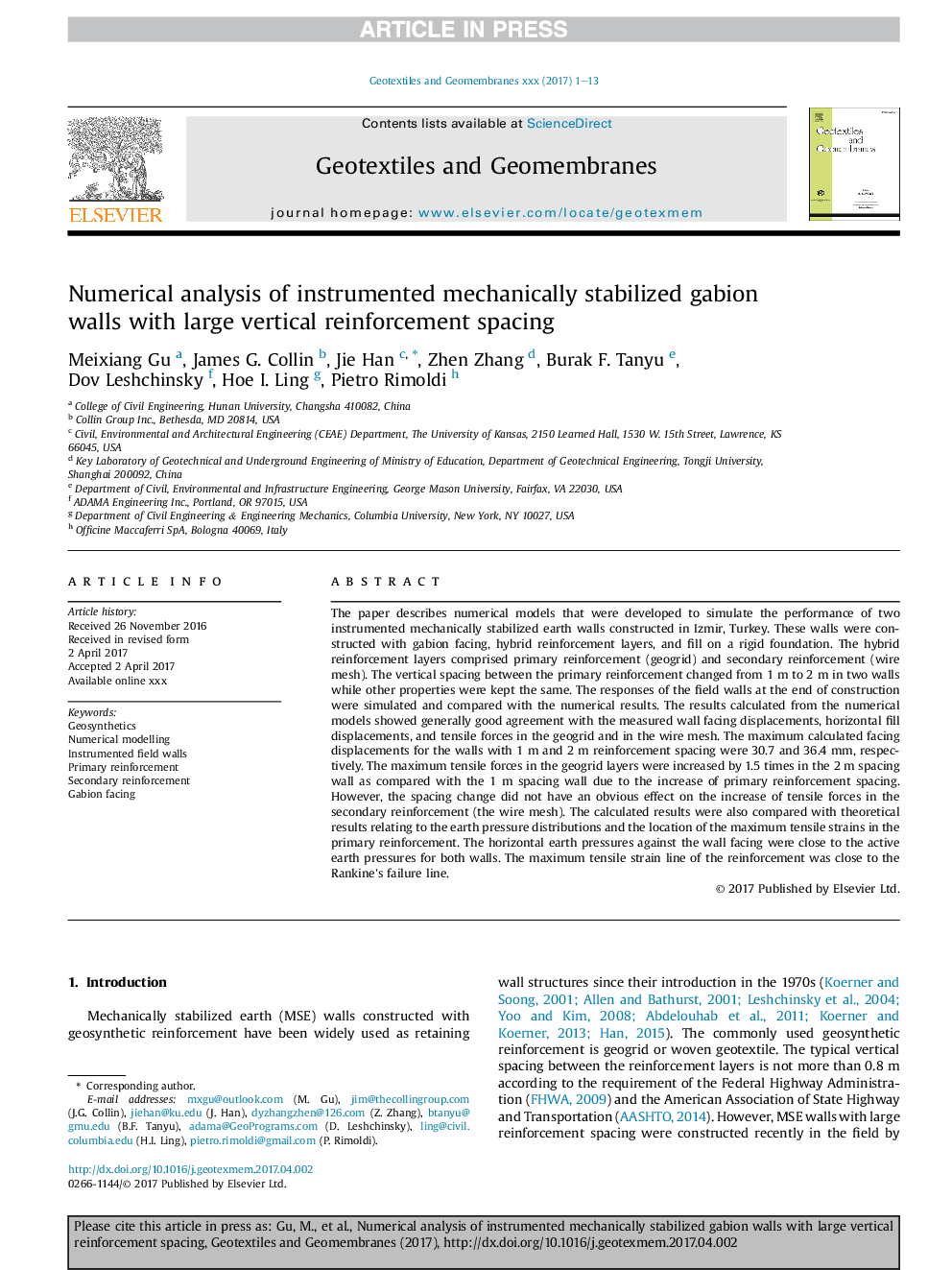| Article ID | Journal | Published Year | Pages | File Type |
|---|---|---|---|---|
| 4921616 | Geotextiles and Geomembranes | 2017 | 13 Pages |
Abstract
The paper describes numerical models that were developed to simulate the performance of two instrumented mechanically stabilized earth walls constructed in Izmir, Turkey. These walls were constructed with gabion facing, hybrid reinforcement layers, and fill on a rigid foundation. The hybrid reinforcement layers comprised primary reinforcement (geogrid) and secondary reinforcement (wire mesh). The vertical spacing between the primary reinforcement changed from 1Â m to 2Â m in two walls while other properties were kept the same. The responses of the field walls at the end of construction were simulated and compared with the numerical results. The results calculated from the numerical models showed generally good agreement with the measured wall facing displacements, horizontal fill displacements, and tensile forces in the geogrid and in the wire mesh. The maximum calculated facing displacements for the walls with 1Â m and 2Â m reinforcement spacing were 30.7 and 36.4Â mm, respectively. The maximum tensile forces in the geogrid layers were increased by 1.5 times in the 2Â m spacing wall as compared with the 1Â m spacing wall due to the increase of primary reinforcement spacing. However, the spacing change did not have an obvious effect on the increase of tensile forces in the secondary reinforcement (the wire mesh). The calculated results were also compared with theoretical results relating to the earth pressure distributions and the location of the maximum tensile strains in the primary reinforcement. The horizontal earth pressures against the wall facing were close to the active earth pressures for both walls. The maximum tensile strain line of the reinforcement was close to the Rankine's failure line.
Related Topics
Physical Sciences and Engineering
Earth and Planetary Sciences
Geotechnical Engineering and Engineering Geology
Authors
Meixiang Gu, James G. Collin, Jie Han, Zhen Zhang, Burak F. Tanyu, Dov Leshchinsky, Hoe I. Ling, Pietro Rimoldi,
